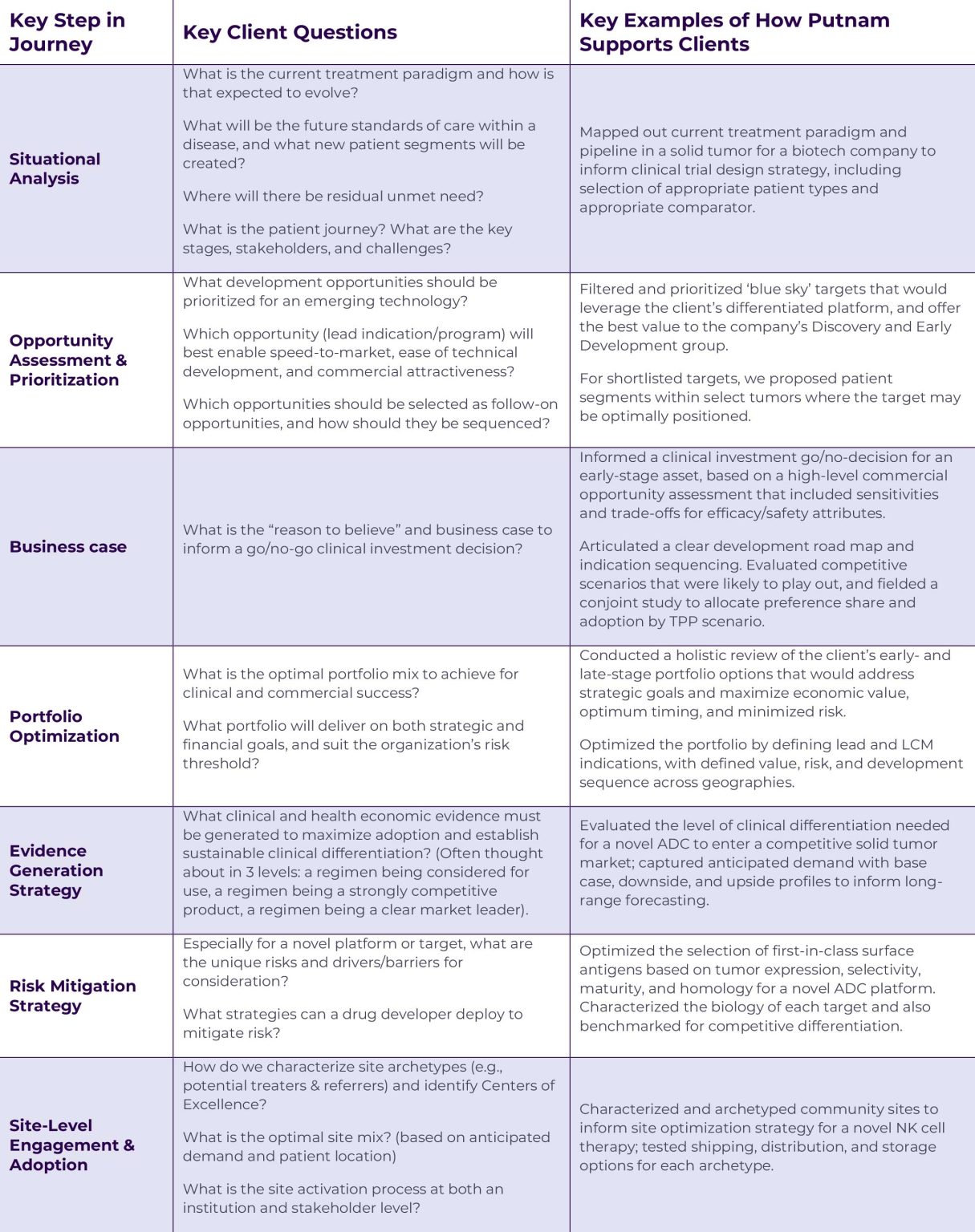-
About us
Centers of Excellence
Putnam’s Centers of Excellence allow us to dig deep, challenge convention, and take you further with strategies underpinned by technical expertise in cutting-edge topics.
-
Our expertise
-
Commercial >We provide commercial consulting and advisory solutions across the product development and commercialization lifecycle.
-
Value, Pricing & Access >Our expertise across scientific and commercial domains delivers a collaborative and bespoke approach to maximize patient access and the commercial success of your innovations.
-
Medical & Scientific Affairs >We provide world-class thought partnership and solutions that enhance the business impact of medical and scientific affairs.
-
Centers of Excellence >
Putnam’s Centers of Excellence allow us to dig deep, challenge convention, and take you further with strategies underpinned by technical expertise in cutting-edge topics.
AI at Putnam
A strategic thought partner for your AI journey
- Join Putnam
- Insights







